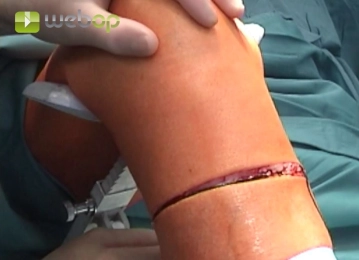- Fontaine stage IV peripheral arterial disease (PAD) of the foot and distal lower leg
- If peripheral vascular reconstruction is not possible, transtibial amputation must have been ruled out and more distal amputation options exhausted
- Ideally, the deep femoral artery (DFA) should be patent, as otherwise healing of the femoral stump is at risk; possibly, reconstruction of the DFA should be attempted first
Classification of PAD according to Fontaine stage and Rutherford category
Fontaine stage | Presentation | Rutherford category | Grade | Presentation |
I | Asymptomatic | 0 | 0 | Asymptomatic |
IIa | Mild claudication (> 200 m) | 1 | I | Mild claudication |
IIb | Moderate to severe claudication (< 200 m) | 2 | I | Moderate claudication |
| 3 | I | Severe claudication | |
III | Ischemic rest pain | 4 | II | Ischemic rest pain |
IV | Ulceration or gangrene | 5 | III | Minor tissue loss |
6 | III | Major tissue loss
|



